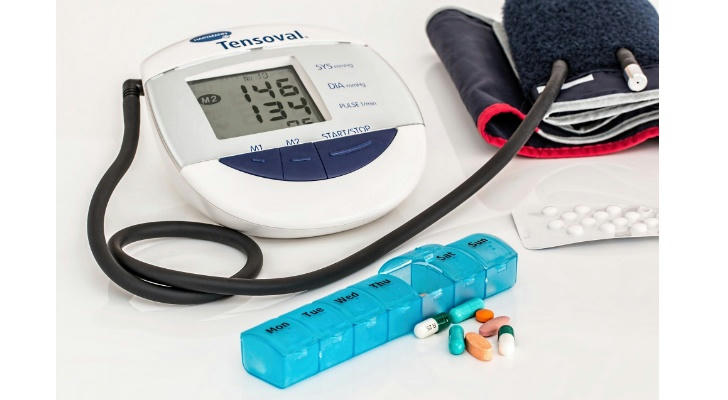How to Develop a Personalized Hypertension Treatment Plan
High blood pressure is a common condition that can lead to serious health complications if left unchecked. It is important to realize that there is no one-size-fits-all approach to treating high blood pressure. Each person's treatment plan should be tailored to their unique situation, including their medical history, lifestyle, and personal preferences. Developing a suitable plan based on personal health conditions will achieve good results.
Understanding Hypertension
Hypertension is defined as having a blood pressure reading of 130/80 mmHg or higher. It can be classified into two types: primary (essential) hypertension, which develops gradually over time without a specific cause, and secondary hypertension, which results from an underlying health condition. Understanding the type of hypertension you have is crucial in developing an effective treatment plan.
Assessing Risk Factors
The first step in creating a personalized treatment plan is to assess your risk factors. These may include:
Age: Risk increases with age.
Family History: A family history of hypertension can increase your risk.
Lifestyle Choices: Diet, physical activity level, smoking, and alcohol consumption play significant roles.
Underlying Health Conditions: Conditions such as diabetes or kidney disease can contribute to hypertension.
Consulting with a healthcare provider for a comprehensive cardiovascular risk assessment can help identify these factors and guide treatment decisions.

Setting Realistic Blood Pressure Goals
Once risk factors are identified, the next step is to establish realistic blood pressure goals. Traditionally, the target for most adults has been below 140/90 mmHg; however, recent guidelines suggest that lower targets may be appropriate for individuals at higher risk for cardiovascular events. For those with existing heart disease or diabetes, aiming for a systolic blood pressure of 130 mmHg or lower may be beneficial.
It’s essential to have an open discussion with your healthcare provider about what targets are realistic and achievable based on your individual circumstances. This shared decision-making process ensures that your preferences and concerns are taken into account.
Lifestyle Modifications
Lifestyle changes are often the first line of defense in managing hypertension. Here are key modifications to consider:
1. Dietary Changes
Adopting a heart-healthy diet can significantly impact blood pressure levels. The DASH (Dietary Approaches to Stop Hypertension) diet emphasizes:
Fruits and Vegetables: Aim for at least five servings daily.
Whole Grains: Incorporate whole grains like brown rice and whole wheat bread.
Lean Proteins: Choose sources such as fish, poultry, beans, and nuts.
Low-Fat Dairy: Opt for low-fat or fat-free options.
Reduced Sodium Intake: Limit sodium to less than 2,300 mg per day (ideally 1,500 mg).
Monitoring portion sizes and reading food labels can help you make healthier choices.

2. Regular Physical Activity
Engaging in regular exercise can help lower blood pressure and improve overall cardiovascular health. Aim for at least 150 minutes of moderate-intensity aerobic activity each week, such as brisk walking or cycling. Incorporating strength training exercises at least twice a week can also be beneficial.
3. Weight Management
If overweight or obese, losing even a small percentage of body weight can help reduce blood pressure levels. Combining dietary changes with regular physical activity is the most effective approach for weight loss.
4. Limiting Alcohol and Quitting Smoking
Reducing alcohol intake to moderate levels—up to one drink per day for women and two drinks per day for men—can help manage blood pressure. Additionally, quitting smoking is crucial as it not only raises blood pressure but also increases the risk of heart disease.
Medication Management
For some individuals, lifestyle changes alone may not be sufficient to control high blood pressure. In such cases, medication may be necessary. There are several classes of antihypertensive medications available:
Diuretics: Help eliminate excess fluid and sodium from the body.
ACE Inhibitors: Relax blood vessels by blocking a hormone that narrows them.
ARBs (Angiotensin II Receptor Blockers): Help relax blood vessels by blocking the action of a hormone that constricts them.
Calcium Channel Blockers: Relax the muscles of the heart and blood vessels.
Beta-blockers: Reduce heart rate and decrease cardiac output.
Your healthcare provider will consider your overall health status, other medications you may be taking, and any potential side effects when prescribing medication.
Regular Monitoring
Monitoring your blood pressure regularly is essential for assessing the effectiveness of your treatment plan. Home blood pressure monitors are widely available and can provide valuable information about how well your lifestyle changes or medications are working.
Schedule regular follow-up appointments with your healthcare provider to discuss your progress and make any necessary adjustments to your treatment plan. Keeping a record of your readings can also facilitate discussions during these visits.
Addressing Psychological Factors
Managing stress effectively is crucial in controlling hypertension. Chronic stress can lead to temporary spikes in blood pressure and contribute to unhealthy coping mechanisms such as poor diet or smoking. Consider incorporating stress-reduction techniques into your routine:
Mindfulness Meditation: Practicing mindfulness can help reduce stress levels.
Deep Breathing Exercises: Simple deep breathing techniques can promote relaxation.
Yoga or Tai Chi: These practices combine physical activity with mindfulness and relaxation.
Seeking Support
Building a support network can enhance adherence to your personalized treatment plan. Consider joining support groups where you can share experiences with others facing similar challenges. Engaging family members in discussions about your health can also foster understanding and encouragement.

Case Study 1: Sarah's Journey with Hypertension
Sarah is a 42-year-old woman diagnosed with stage 1 hypertension during her annual check-up. Her initial reading was 138/88 mmHg. After assessing her risk factors—she has a family history of hypertension and leads a sedentary lifestyle—her healthcare provider recommended lifestyle modifications as the first step in her treatment plan.
Sarah adopted the DASH diet, focusing on fruits and vegetables while reducing her sodium intake. She also began walking for 30 minutes five days a week. After three months of these changes, her blood pressure dropped to 128/82 mmHg. However, it remained slightly elevated during stressful periods at work.
Recognizing that lifestyle modifications alone were insufficient during stressful times, her healthcare provider prescribed an ACE inhibitor to help manage her blood pressure more effectively. With regular monitoring and continued lifestyle adherence, Sarah successfully maintained her blood pressure within target ranges.
Case Study 2: John’s Complex Hypertension Management
John is a 55-year-old man with poorly controlled hypertension diagnosed five years ago. He has a history of diabetes and chronic kidney disease. His previous treatments included multiple antihypertensive medications; however, his blood pressure remained high at around 160/100 mmHg despite adherence to his regimen.
After reassessing John’s health status and considering his comorbidities, his healthcare provider decided on a more personalized approach. They utilized machine learning algorithms that analyzed John’s medical history and demographic data to recommend an optimal medication regimen tailored specifically for him.
The model suggested starting John on an ARB combined with a diuretic while closely monitoring his kidney function due to his existing condition. After implementing this personalized treatment plan along with dietary modifications (reducing sodium intake) and increasing physical activity (gentle walking), John’s blood pressure improved significantly over six months, averaging around 135/85 mmHg.
Conclusion
Developing a personalized high blood pressure treatment plan involves understanding individual health profiles, setting realistic goals, making lifestyle modifications, managing medications effectively, and monitoring progress regularly. By incorporating these steps into their care strategy—along with case studies illustrating real-world applications—individuals can achieve better outcomes in managing their hypertension.
Personalized approaches not only enhance adherence but also empower patients to take an active role in their health management journey. With commitment and collaboration with healthcare providers, individuals living with high blood pressure can lead healthier lives filled with vitality and well-being.
